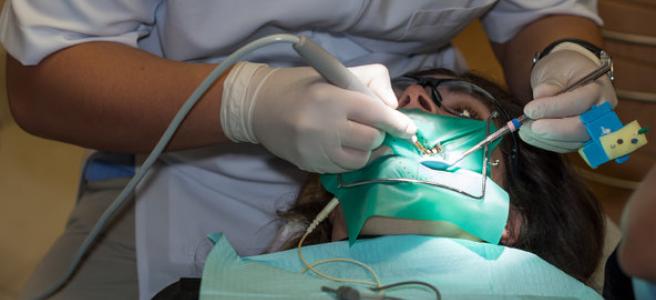
Left untreated, a serious tooth abscess can eventually kill.
In 2007, Deamonte Driver, a 12-year-old boy in Maryland, died after bacteria from an abscessed tooth spread to his brain. The case drewwidespread media attention, and his is the cautionary tale cited whenever politicians and advocates discuss access to oral health care.
But a new study suggests that deaths from these preventable infections may not be as rare as once thought and that the number of Americans hospitalized with them may be on the rise.
Studies have shown that dental problems account for hundreds of thousands of emergency room visits each year. The new analysis, published in the September issue of the Journal of Endodontics, focused on patients who had to be hospitalized because of an infection of the tip of the tooth’s root, called a periapical abscess. It is a common consequence of untreated tooth decay, and it can be dangerous if it spreads.
After reviewing national patient data from 2000 to 2008, researchers in Boston found that the people hospitalized for dental abscesses increased by more than 40 percent, to 8,141 in 2008 from 5,757 in 2000. Some 66 patients died after they were hospitalized, according to the new analysis.
“We have not had verification before of the number of deaths,” said Dr. Frank Catalanotto, chairman of the department of community dentistry and behavioral science at the University of Florida College of Dentistry, who was not involved in the report. “The seriousness of dental infections that go untreated or are treated too late is a bigger problem than we had estimated.”
When money and access are not problems, an abscessed tooth can easily be treated with a root canal or an extraction. But increasingly, Americans rely on hospital emergency rooms for dental care, instead of regular dentist visits — a trend exacerbated by a lack of insurance coverage and trouble paying out of pocket.
Last year, a Pew Charitable Trusts report estimated that preventable dental conditions, including abscessed teeth, were the primary reason for 830,590 emergency room visits in 2009 — a 16 percent increase from 2006.
Until now, it has been unclear just how many patients end up hospitalized specifically for abscessed teeth or how much they cost the health care system. According to the new analysis, that figure was $858.9 million, after adjustment for inflation, from 2000 to 2008.
“That’s what we are paying instead of paying up front, and it’s such a waste, one with a high human cost,” said Shelly Gehshan, the director of the Pew Children’s Dental Campaign. “Dental insurance is eroding little by little, and affordability of dental care is something the industry has not addressed.”
A periapical abscess is a “rare event, and to have significant morbidity is even rarer,” said Dr. Bruce Dye, a dental epidemiologist at the Centers for Disease Control and Prevention. Still, the number of patients hospitalized for them is “creeping up.”
But Dr. Dye cautioned that the analysis did not address whether patients were able to afford dental care; some may have ended up at the emergency room for a complication after receiving a root canal from a dentist. “You can’t make the statement that this is a sign of increased problem of access to care,” he said.
Medicaid coverage for routine dental services for adults varies widely by state; Medicare does not cover routine dental care. The programs do pay for hospital stays, however, and the new study found that Medicare paid for roughly 19 percent of hospitalizations for dental abscesses, while Medicaid shouldered 25 percent and private insurance plans paid for 33 percent.
In recent years, Dr. Samuel Dorn, a chairman of endodontics at the University of Texas Health Science Center at Houston, said he had seen an increase in hospitalizations for dental abscesses.
“People put it off until they find their face all swollen or they can’t breathe, and they run to the hospital,” he said. “And that’s when we have these emergent conditions.”
His colleague Dr. Mark Wong, the chairman of oral surgery at the university, said residents’ logs showed that in 2008, 273 “incision and drainage” procedures because of abscessed teeth were done in local hospitals. Last year, the number was 488; 248 patients were hospitalized.
“To call this an epidemic of dental infections we are seeing in major hospital environments and in our emergency rooms — it’s not an overstatement,” Dr. Wong said.
An acute abscess of an upper tooth can cause cheek swelling and, untreated, lead to a brain abscess or a sinus infection. If bacteria spread from an abscess in a lower tooth, the swelling can constrict the airway. Some patients underestimate how serious the condition can be.
“It’s better to have it treated when it’s treatable than to wait until it gets out of hand and is possibly life-threatening,” said Dr. Gary R. Hartwell, the president of the American Association of Endodontists. The increase in hospitalizations is part of a sea change in dental care, he said: “Now it’s reached a point unless something’s bothering them or they’ve got pain, people say, ‘I’m just not going to go to the dentist.’ ”

